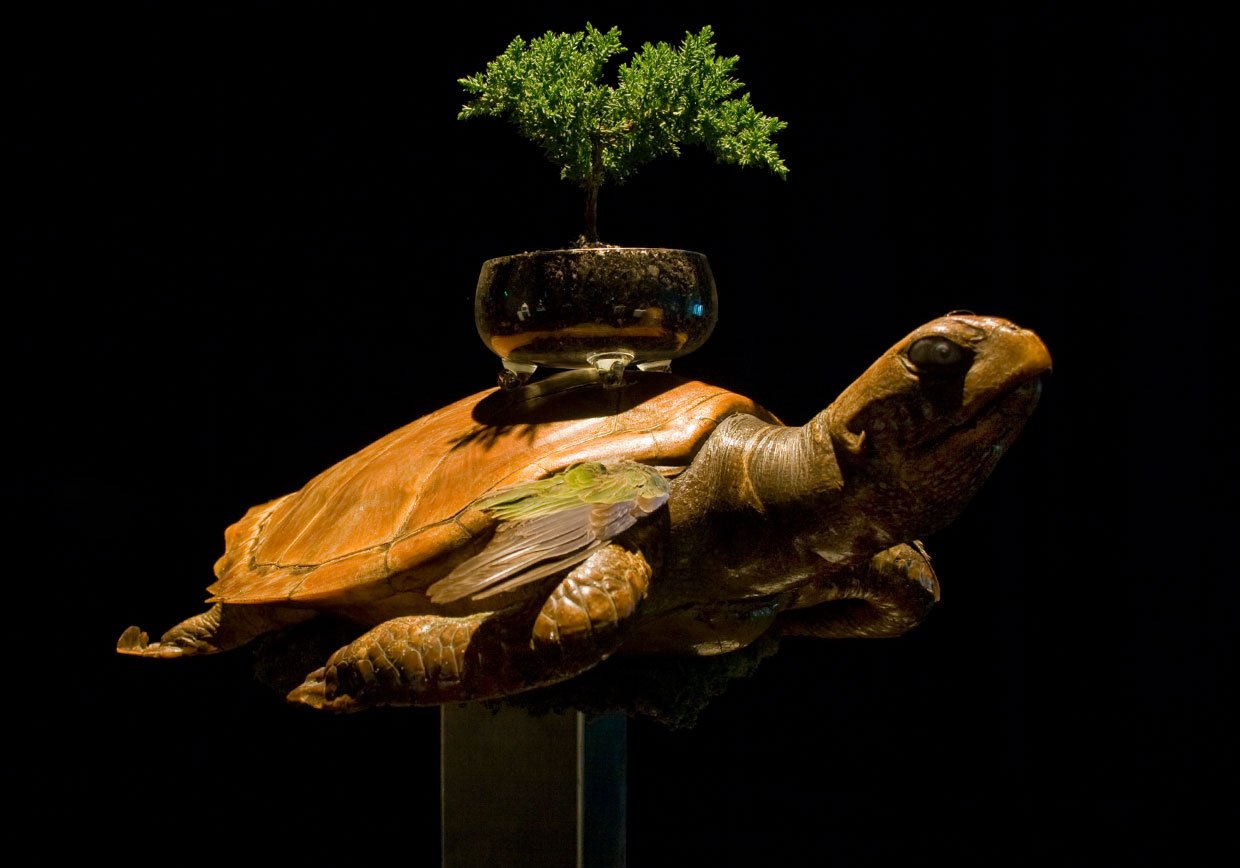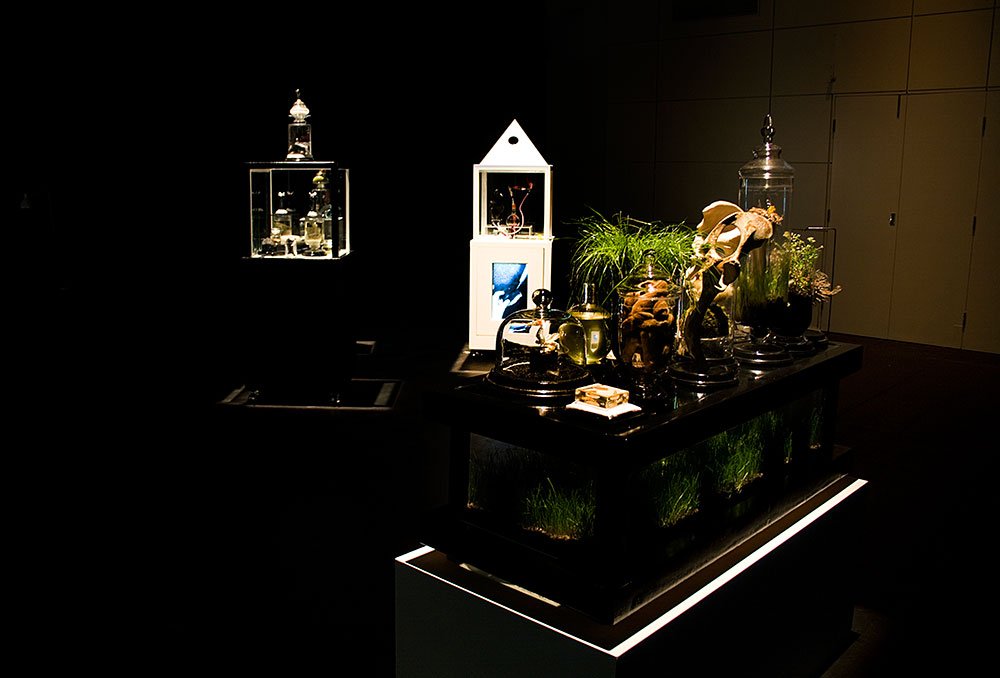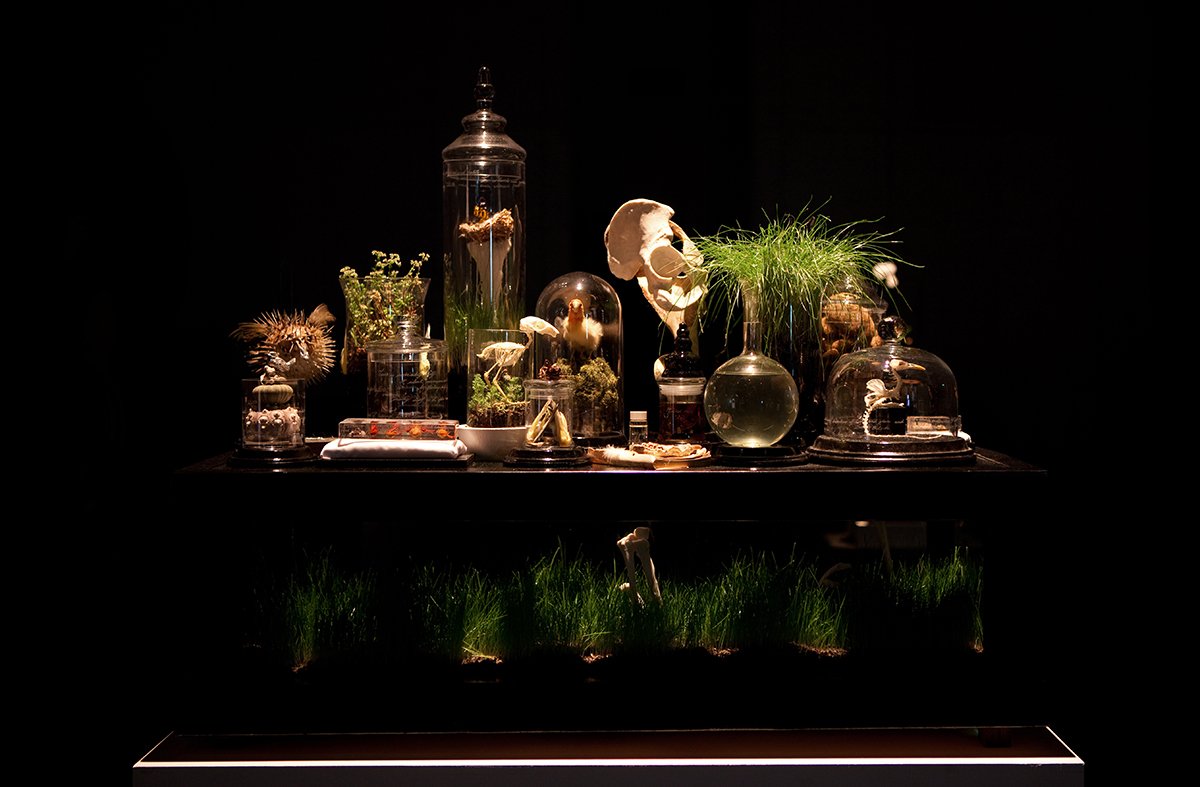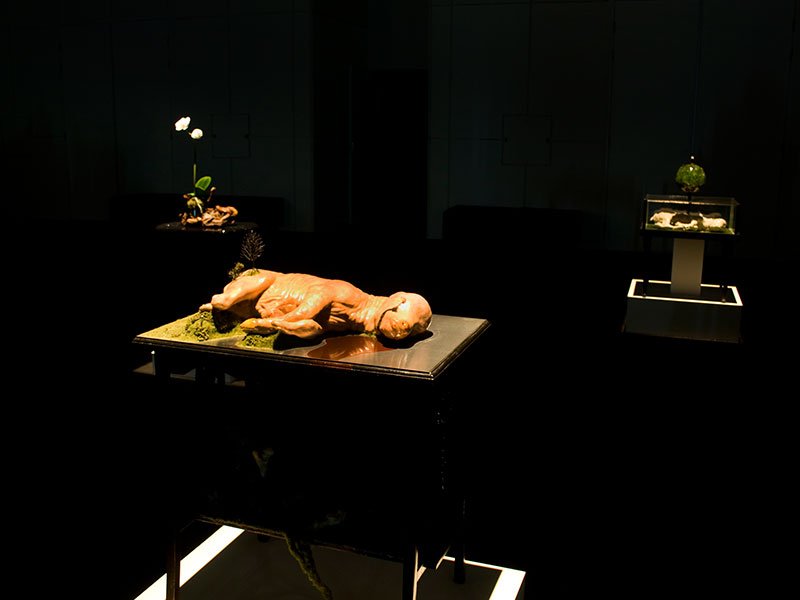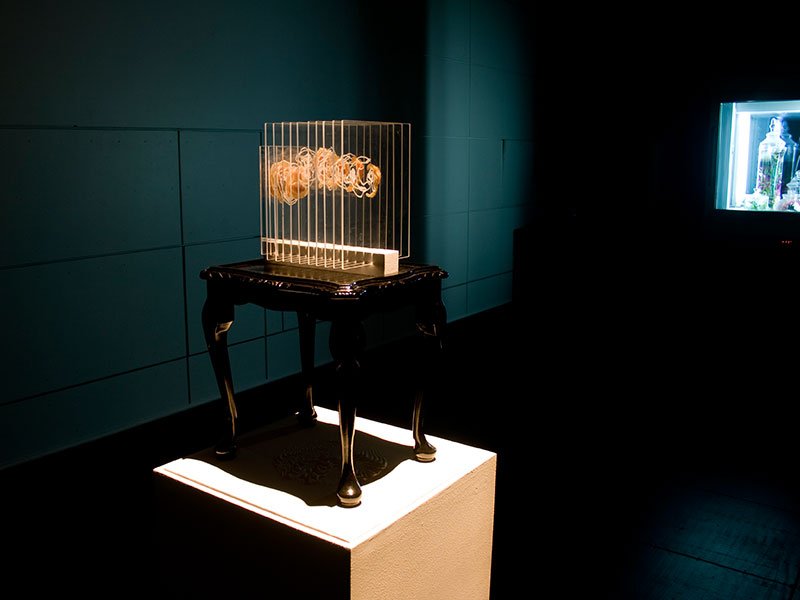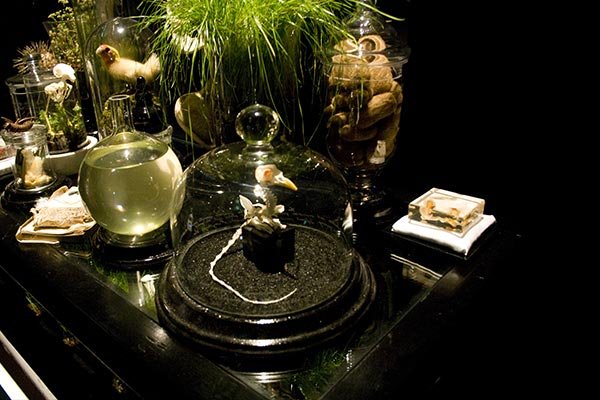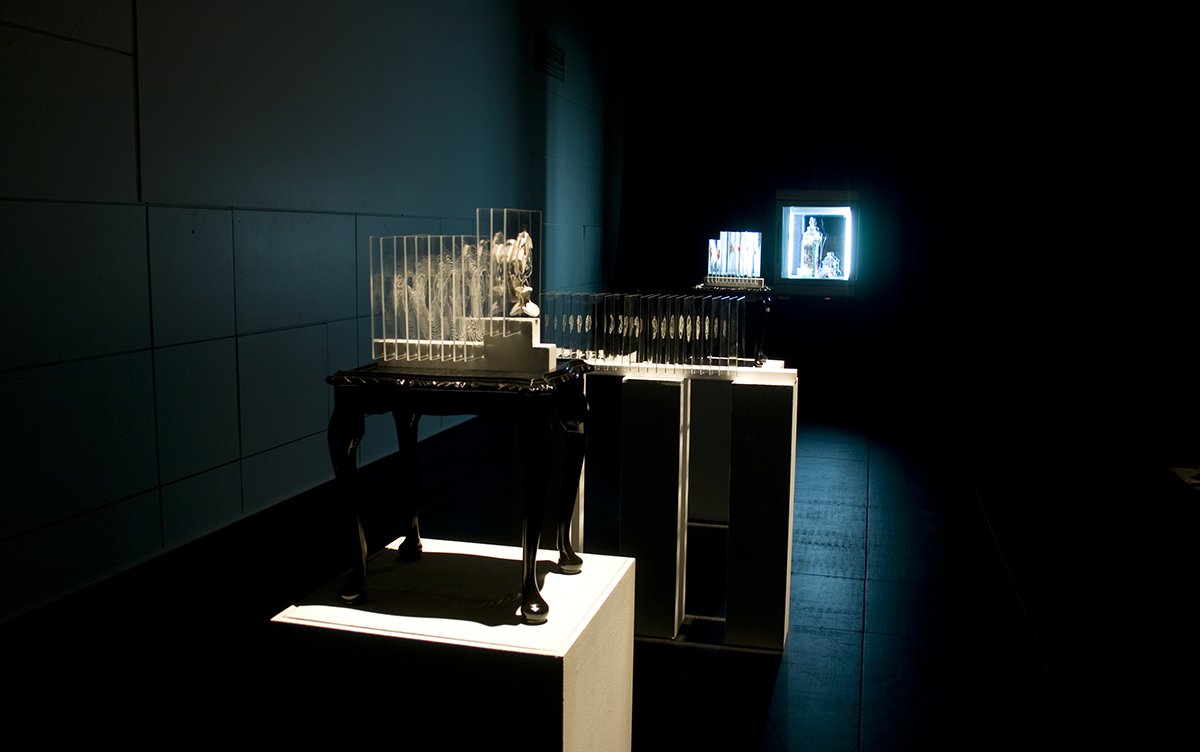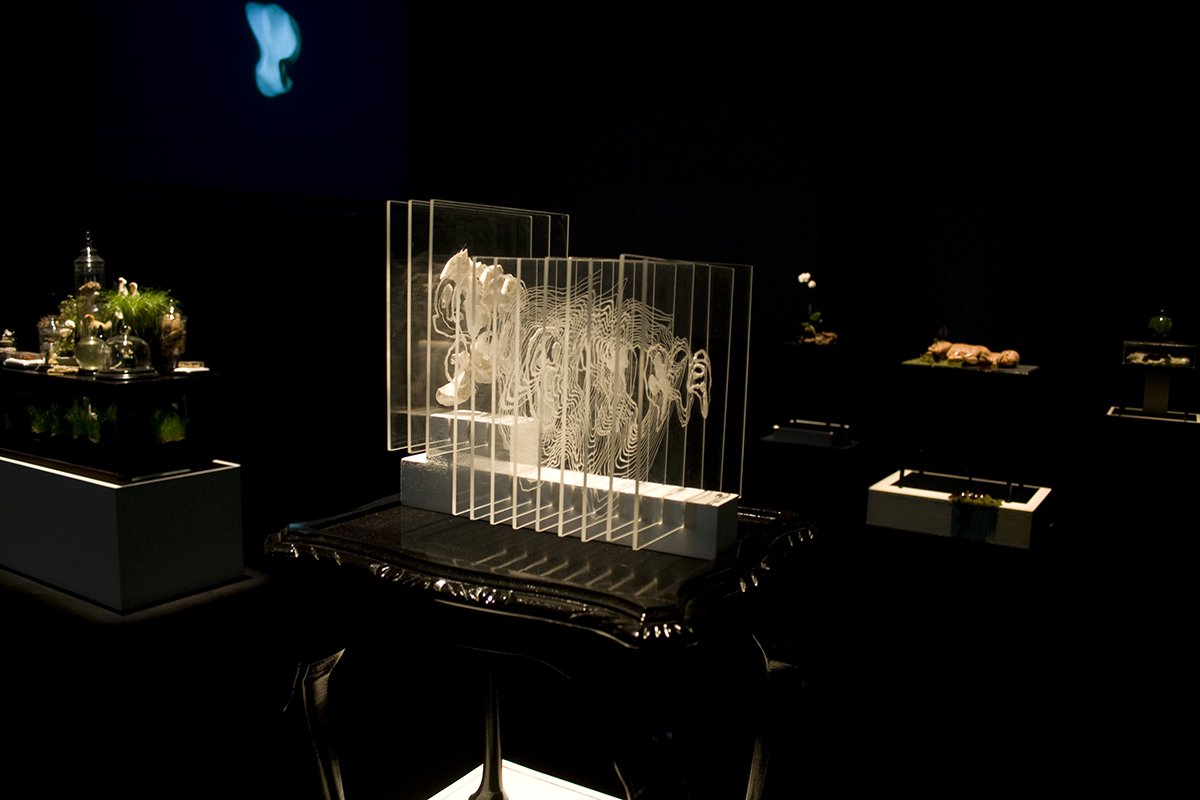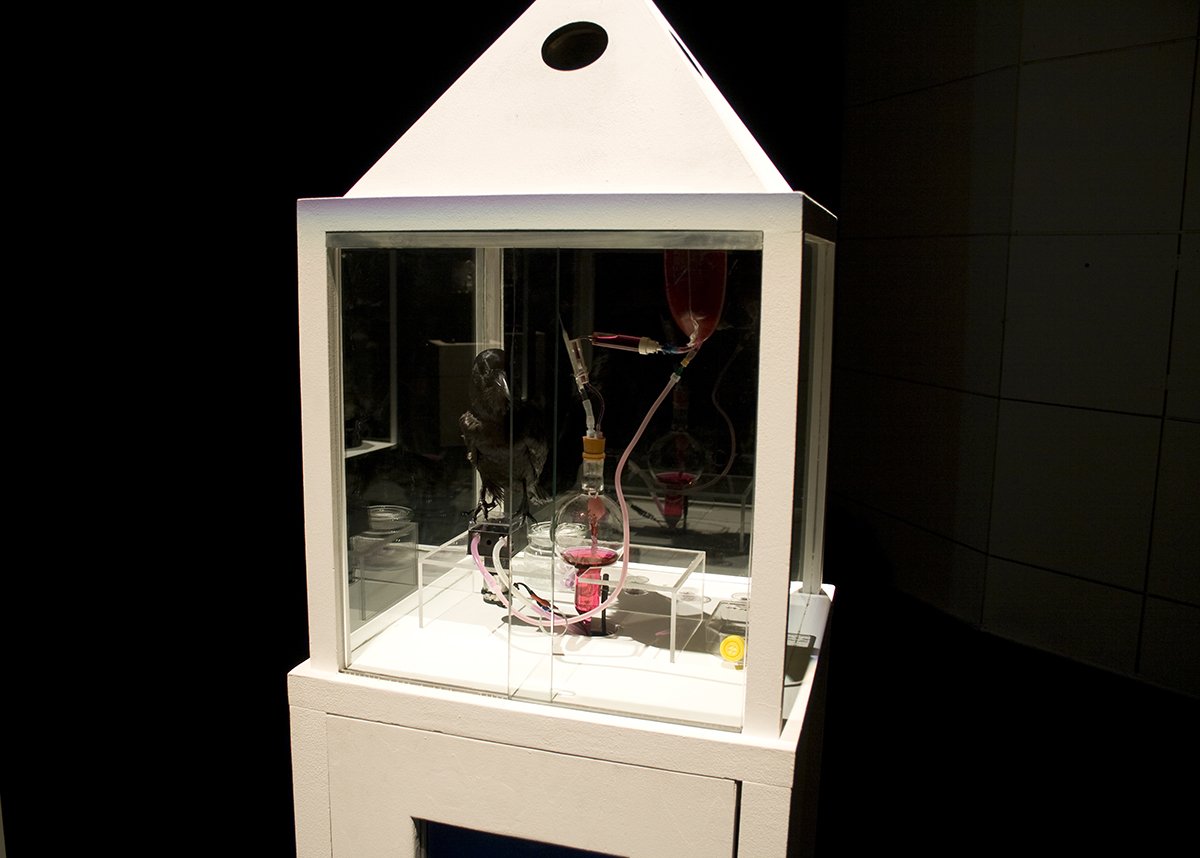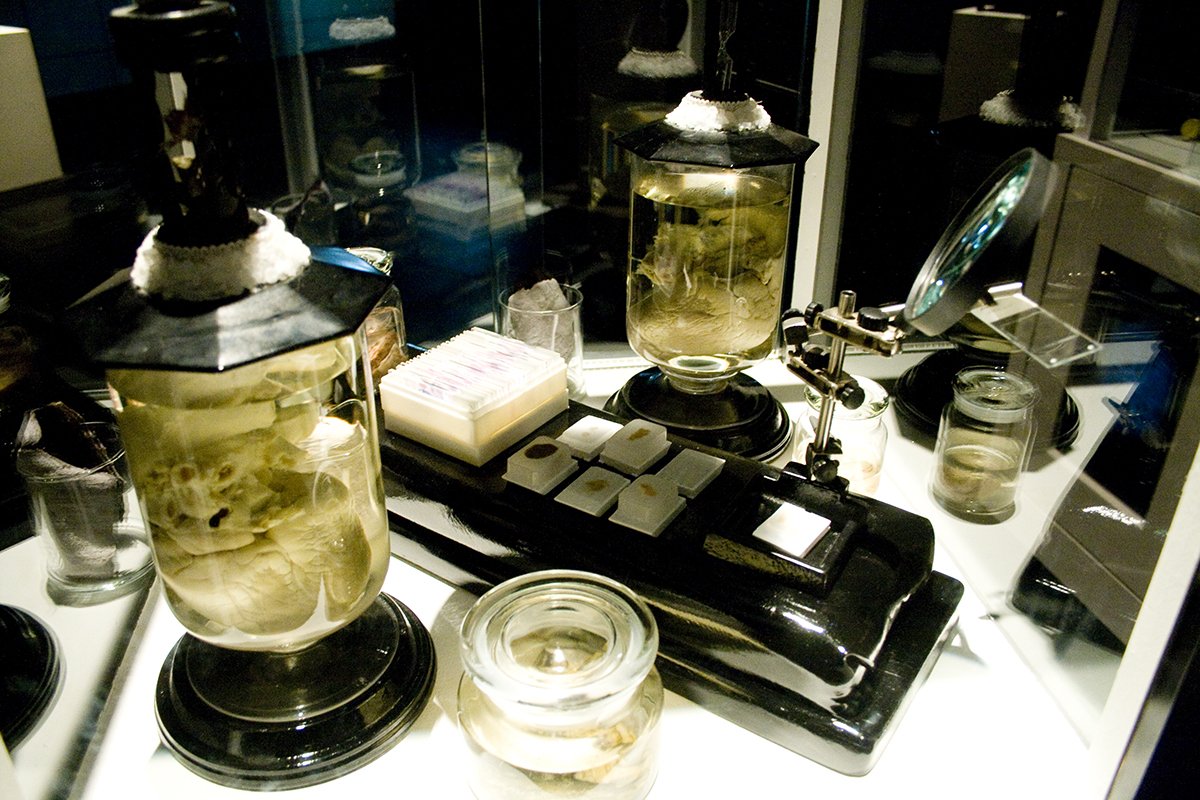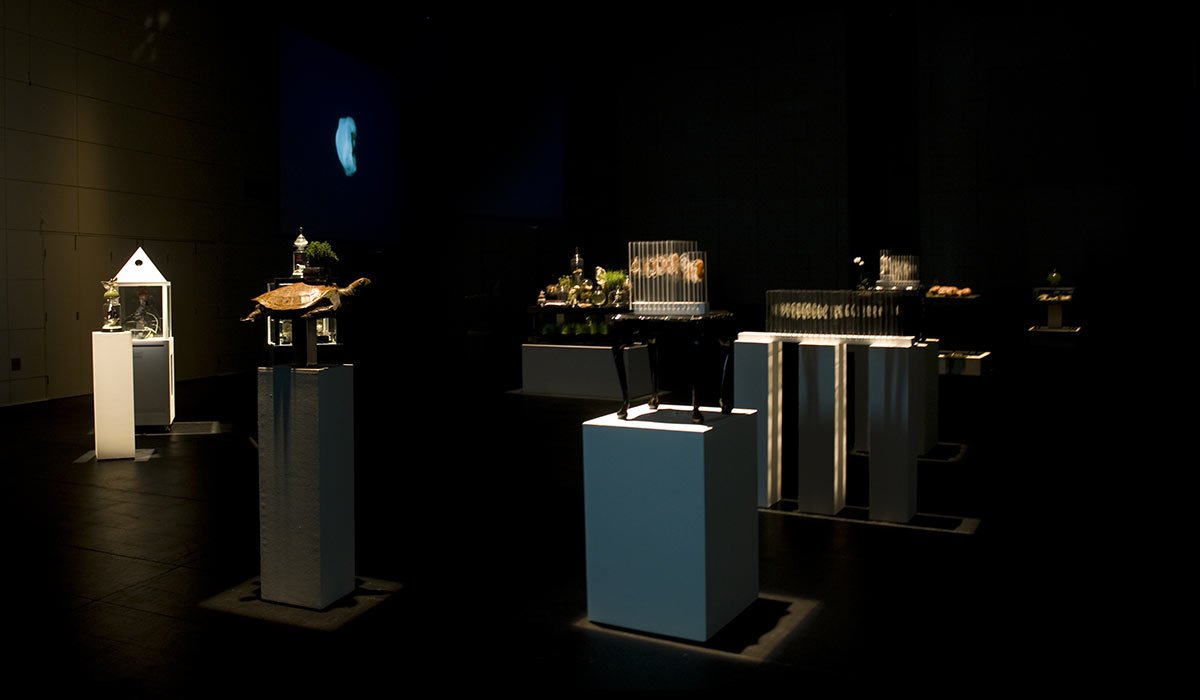The Absence of Alice #6
The Absence of Alice and the Bone Gardens, the sixth instance in The Absence of Alice series, was exhibited at QUT’s The Block gallery in August 2010. This iteration explored cycles of life and death, focusing on the complex relationships between humans and other organisms within the contexts of scientific research and everyday consumption practices. The exhibition featured sculptural and new media works incorporating living, preserved, and transformed organisms, emphasising how biotechnological interventions blur the boundaries between species and highlight human impact on other forms of life.
A central piece in this instance was Towards the Immortalisation of Kira and Rama: The Temporary Resurrection and Second Death of Kira, which showcased living cells from Kira, one of two fetal calves who’s cells were isolated and cultured in 2010. This work encapsulated themes of resurrection and mortality, as Kira's cells were briefly revived in a bioreactor before slowly dying during the exhibition period, highlighting the transient nature of all life including scientific resurrection.
Presented in conjunction with the Virtual Anatomies Symposium at the University of Queensland, which examined the cultural impact of new medical imaging technologies, The Absence of Alice and the Bone Gardens encouraged reflection on how biotechnologies reshape our understanding of existence, mortality, and the ethical responsibilities in our interactions with other organisms.
PROJECT PARTNERS: The Absence of Alice and the Bone Gardens was developed in a creative partnership between The Institute of Health and Biomedical Innovation (IHBI) and The Creative Industries Faculty (CIF) at QUT, Brisbane (Aus). Completion of works would not be possible without the support from the Tissue Repair and Regeneration (TRR) Group and CIF technical staff. Special thanks to Dr Tony Parker, Dr Derek Van Lonkhuyzen and Jacqui McGovern from IHBI and visual arts technician Michael Riddle. Many thanks are also extended to: Dr Dan Mafe, Dr Courtney Pedersen and Prof. Zee Upton.
The project also includes work fromThe Immortalisation of Kira and Rama which was researched and developed during a residency at Symbiotica, the Centre of Excellence in Biological Arts in the School of Anatomy & Human Biology at The University of Western Australia. Production of this works relied on expert input from Symbiotica staff, The Tissue Culture and Art Project (Oron Catts and Ionat Zurr) and research scientists. Thank you.


